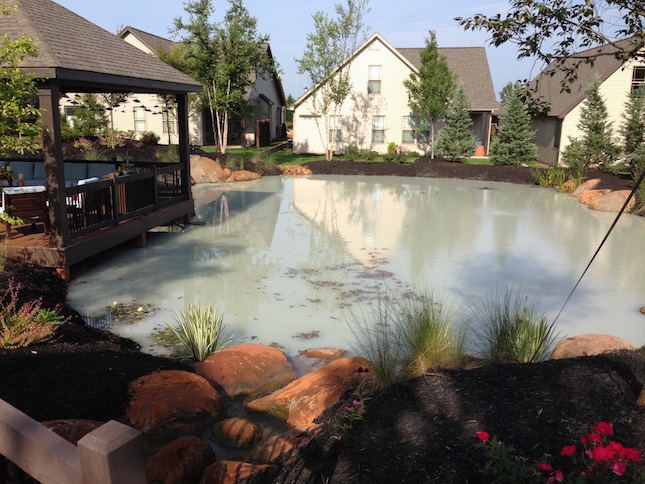Bentonite Clay
When building a pond, there are a few ways to line it. Most people use a liner, but don’t know that bentonite clay works well and can be less expensive than a liner.
Bentonite clay is a natural absorbent aluminum phyllosilicate clay that was originally found in Rock River, Wyoming. It can be used as the entire liner, or it can be used to cover leaks when ordered on a pallet.
Bentonite clay can expand up to 10 times its size when it gets wet like a blood clot. It acts like a blanket for the pond. If you aren’t sure how much to use, it’s better to be safe and put more down than not enough. However, it is very expensive to ship.
If you choose to use bentonite clay, you will need to line it before you add water. But if not tilled into the soil may not work to seal the entire pond. This pond still needs water added by a well pump daily.
If not, the clay will mix with the water leaving your pond looking very milky before it settles like in the below picture. Not only will it look milky, if anyone were to go swimming, but the clay would also stick to your skin making it look like you have a serious sunburn until it dried and flaked off.
It works best in places that have a more sandy soil.
Below is a ratio chart from texasbentonite.com.
| PRIMARY SOIL TYPE | AMOUNT OF POND SEALANT REQUIRED |
|---|---|
| Clay Soil | 1.0 to 1.5 lbs per sq ft |
| Sandy Silt | 20% Clay Min 2.0 to 2.5 lbs per sq ft |
| Silty Sand | 3.0 to 3.5 lbs per sq ft |
| Clean Sand | 4.0 to 4.5 lbs per sq ft |
| Rock Or Gravel | 5.0 to 6.0 lbs per sq ft |
Sealing Ponds with Bentonite Clay by Texas A&M University
*Not only is bentonite clay good for ponds, but it’s also great for skin! It has been used for bug bites, chicken pox, dry skin, and it has even been used as a mouthwash.
Now serving Greenville SC, Spartanburg SC, Asheville NC, & Charlotte NC areas.
Get started. Become a member today!




